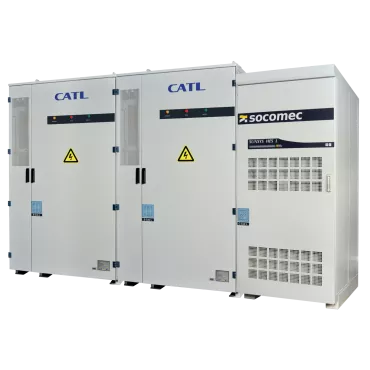Reducing energy billing
With the massive developments in cloud computing, data centre activities are evolving in parallel – demonstrated by a significant increase in energy consumption and the associated financial costs. Reducing energy billing is, therefore, a major competitive challenge for data centre operators.
With financial incentives introduced specifically to increase the flexibility of the German electricity network – plus legislation to create the legal basis for the expansion of renewable energy in the long term (EEG, Erneuerbare Energien Gesetz) - these key changes ensure that German organisations are active participants in the energy transition.
For example, grid usage fees in Germany account for approximately 25% of an organisation's electricity bill. By modulating the organisation’s load profile, however, and taking into account the various incentives defined within German legislation, this element of the total electricity cost can be reduced by up to 90%.
The objective of this incentive is to reduce power demand during hourly periods of high grid demand – the peak load window - generally in the evening during autumn and winter.
- Consumers: companies subject to the authorisation of the regulator.
- Operating model: the network operator defines periods of high use of the network. The annual power peak during these periods serves as a reference for the invoicing of network usage charges. Power demand should, therefore, be reduced as much as possible during these periods.
- Financial gains: a reduction in network usage costs of up to 80% depending on demand response capacities during periods defined by the operator.
The objective of this rule is to influence power demand so that the consumption curve is as flat and predictable as possible throughout the year.
- Consumers: companies with annual consumption > 10GWh
- Operating model: the benefit is analysed by calculating the annual usage time (annual consumption in kWh / annual peak in kW). If the annual usage time is more than 7,000 hours, a discount will be applied.
- Financial gains:
- Number of hours of use > 7000 => 80% reduction in network usage costs
- Number of hours of use > 7500 => 85% reduction in network usage costs
- Number of hours of use > 8000 => 90% reduction in network usage costs
The benefits of storage
Energy storage is currently the most appropriate and effective way to enable organisations to reduce their power demand during periods defined by the operator (atypical use) and for electro-intensive infrastructure to flatten the consumption curve (7000h rule).
For an intensive consumer such as a data centre, the economic gain can be particularly interesting, because the return on investment of a storage system is generally rapid.
Here is a very concrete example of the reduction in network usage costs that a data centre could achieve by applying the 7000h rule.
- Annual consumption: 70,697,898 kWh
- Peak consumption: 10,400 kW
- Base price: €115.02/kW
- Annual network usage fee: €1,196,208/year.
The calculation of the annual usage time (6797 h) shows that as it stands, the data centre cannot benefit from the 80% reduction on network usage costs.
The economic calculation
According to the analysis of the data centre load curve, the implementation of a storage system sized at 300kW / 2.4MWh would make it possible to smooth energy consumption and exceed 7000 hours of usage time, therefore entitling the facility to claim the 80% reduction on network usage fees.
The Socomec solution
SUNSYS HES L is a native outdoor system that combines proven technologies to create a solution that is far greater than the sum of its parts.
This outdoor modular system sets a new standard in safety and has been engineered for commercial and industrial buildings, electric vehicle charging infrastructure, isolated microgrids, resilient microgrids and in supporting the integration of renewable energy. Using the EnerOne liquid-cooled LFP battery from partner CATL, SUNSYS is available in a variety of configurations and the range can operate as both a voltage generator and current generator.





